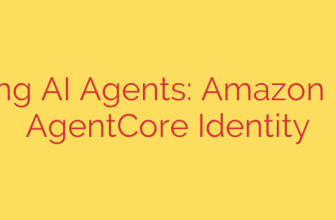
Beyond the Hard Drive: The Evolution and Future of Smart Storage
In today’s digital world, data is more than just information—it’s the lifeblood of modern business. We are creating, collecting, and analyzing data at an unprecedented rate. However, the traditional methods of storing this data in passive, disconnected “silos” are no longer sufficient. This data explosion has fueled a quiet but powerful revolution in technology: the rise of smart storage.
Gone are the days when storage was simply a digital filing cabinet. The evolution of storage technology has transformed it from a passive container into an active, intelligent partner in managing your most valuable asset.
From Traditional to Intelligent: A Necessary Leap
For decades, storage systems were straightforward. You had a hard drive or a server, and its primary job was to hold data until you needed it. Management was a manual, time-consuming process. IT teams had to constantly monitor capacity, manage backups, and react to hardware failures. This reactive approach was inefficient, expensive, and increasingly risky.
The turning point came with the realization that the storage system itself could be a source of valuable insight. Why just store the data when you could understand, manage, and protect it more effectively? This question paved the way for smart storage—systems infused with automation, artificial intelligence (AI), and advanced analytics.
What is Smart Storage? More Than Just Space
Smart storage is an approach to data management where the infrastructure is self-aware and capable of making autonomous decisions to optimize its performance, efficiency, and security. Think of it as the difference between a simple warehouse and a fully automated logistics center managed by a brilliant AI.
Key characteristics of a smart storage system include:
- Intelligent Automation: Smart storage systems can autonomously manage data placement, moving frequently accessed “hot” data to faster media and less critical “cold” data to more economical tiers. They also perform self-healing tasks, anticipating and resolving issues before they cause downtime.
- AI and Machine Learning Integration: At the heart of smart storage is AI. Machine learning algorithms analyze workload patterns to predict future capacity needs, identify performance bottlenecks, and detect unusual activity that could signal a security breach.
- Proactive Analytics and Insights: These systems don’t just store data; they analyze it. By understanding the data it holds, a smart storage solution can provide valuable insights that help businesses make better decisions, improve compliance, and unlock new revenue streams.
- Enhanced, Predictive Security: Instead of relying solely on external security tools, smart storage incorporates security at its core. It can identify ransomware patterns, flag suspicious access requests, and automatically create immutable data snapshots to ensure rapid recovery from an attack.
The Tangible Benefits of Adopting Smart Storage
Moving to an intelligent storage strategy isn’t just a technical upgrade; it’s a strategic business decision that delivers powerful, measurable results.
- Massively Improved Efficiency: By automating routine tasks like data tiering, load balancing, and health monitoring, IT teams are freed from manual labor. This allows them to focus on high-value strategic initiatives instead of just “keeping the lights on.”
- Significant Cost Reduction: Smart storage optimizes resource utilization, ensuring you’re not overpaying for high-performance storage for data that doesn’t need it. Furthermore, predictive maintenance drastically reduces the costly impact of unexpected hardware failures and downtime.
- Unbreakable Security and Data Resilience: In an era of constant cyber threats, proactive security is essential. Smart storage systems provide a powerful line of defense by detecting threats in real-time and ensuring that you have clean, uncorrupted data copies for immediate restoration.
- Effortless Scalability: As your data needs grow, a smart storage environment can scale seamlessly. Its predictive analytics ensure that you can add capacity and performance exactly when needed, eliminating guesswork and preventing performance degradation.
Actionable Security Tips for Your Smart Storage Strategy
While intelligent storage offers advanced protection, it should be part of a comprehensive security posture. Here are a few essential tips:
- Implement a Zero-Trust Model: Never trust, always verify. Ensure that every user and device is strictly authenticated before being granted access to any storage resource.
- Enforce End-to-End Encryption: All data should be encrypted, both when it’s stored (at rest) and when it’s being transmitted (in transit). This makes the data useless to unauthorized parties even if they manage to access it.
- Maintain Immutable Snapshots: Regularly create data snapshots that cannot be altered or deleted by ransomware. This is your ultimate safety net for a quick and reliable recovery.
- Conduct Regular Audits: Use the analytical capabilities of your storage system to regularly audit access logs. Look for unusual patterns, such as a user accessing data at odd hours or from a strange location.
The Future of Data Management is Already Here
The evolution of storage is far from over. We are now seeing the integration of smart storage with edge computing, where data is processed and analyzed closer to its source, like in IoT devices or factory floors. This reduces latency and enables real-time decision-making. Furthermore, the push for sustainability is driving the development of “green” storage solutions that use AI to minimize energy consumption without sacrificing performance.
Ultimately, smart storage represents a fundamental shift in how we view and interact with our data. It is no longer a cost center or a simple utility. It is an intelligent, dynamic, and indispensable part of any modern organization’s digital foundation. By embracing this evolution, businesses can ensure their data is not only safe and accessible but also a powerful engine for innovation and growth.
Source: https://cloud.google.com/blog/products/storage-data-transfer/make-your-unstructured-data-smart-with-cloud-storage/








